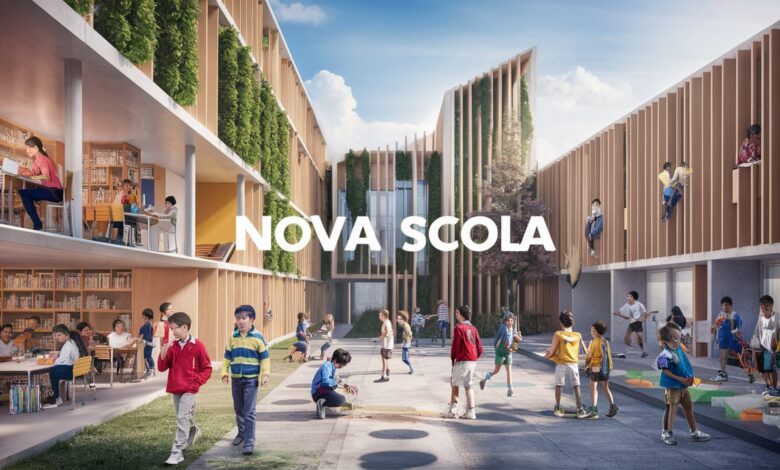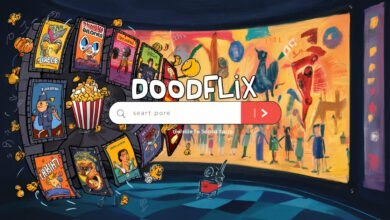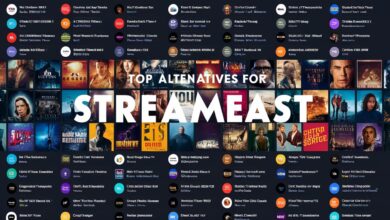Nova Scola: The Evolution of Modern Learning and Innovation in Education

In today’s fast-moving digital world, education is no longer confined to traditional classrooms and chalkboards. The concept of Nova Scola represents a new era in learning, innovation, and educational transformation. Derived from the Latin words meaning “New School,” Nova Scola symbolizes the shift toward modern, flexible, and inclusive learning environments where creativity, technology, and personalized education come together. As education systems worldwide adapt to 21st-century challenges, Nova Scola stands as a model of how schools can empower learners with skills, curiosity, and confidence to thrive in an interconnected global community.
Understanding Nova Scola: A New Model for Modern Education
The Nova Scola model is not just another reform in education—it is a complete re-imagining of what learning means in the 21st century. It combines innovation, digital technology, emotional intelligence, and creative thinking to prepare students for real-world challenges. Traditional schools often focus solely on academic results, whereas Nova Scola emphasizes holistic development—fostering curiosity, adaptability, empathy, and problem-solving skills.
Under the Nova Scola philosophy, learning is student-centered rather than teacher-driven. The teacher becomes a mentor or facilitator who guides learners through discovery-based projects and experiential education. Instead of memorizing facts, students engage in active learning—exploring, questioning, experimenting, and creating. This approach develops critical thinking, communication, and collaboration, which are essential for success in a rapidly changing world.
The Philosophy of Nova Scola: Where Creativity Meets Knowledge
At the heart of Nova Scola lies a powerful belief: education should inspire, not constrain. The Nova Scola philosophy integrates creativity, collaboration, and curiosity into every stage of learning. Students are encouraged to think beyond textbooks, explore different perspectives, and express their individuality through innovative projects and artistic endeavors.
Technology plays a significant role in this model. From virtual reality simulations to AI-powered personalized learning apps, Nova Scola integrates digital tools that enhance understanding and engagement. The goal is not just to use technology, but to use it purposefully—to make education more interactive, inclusive, and impactful.
Moreover, Nova Scola emphasizes emotional and social learning. In an age where digital interaction often replaces face-to-face communication, teaching empathy, resilience, and teamwork becomes more important than ever. This holistic model ensures that learners are not only academically capable but also emotionally intelligent and socially aware.
Key Features of Nova Scola: Building the Future of Learning
1. Personalized Learning Paths
Nova Scola moves away from the one-size-fits-all approach. Every student follows a customized learning path based on their abilities, interests, and goals. Using AI-driven assessments and adaptive technologies, the curriculum adapts dynamically to each learner’s progress, providing challenges when needed and support when necessary.
2. Smart Classrooms and Digital Integration
Classrooms in Nova Scola are equipped with smart boards, interactive tablets, digital labs, and cloud-based learning platforms. This ecosystem allows students to access knowledge beyond classroom walls and collaborate in real-time with peers from across the world. Learning becomes continuous, seamless, and globally connected.
3. Project-Based Learning
Instead of rote memorization, Nova Scola focuses on real-world projects that integrate science, art, design, and social responsibility. Students might create renewable energy models, design apps, or conduct community research. These projects foster practical problem-solving and leadership skills.
4. Global Citizenship and Sustainability
Nova Scola encourages global awareness and sustainable thinking. Learners are taught to appreciate cultural diversity, environmental stewardship, and ethical decision-making. They are prepared to become global citizens who understand their responsibility toward people and the planet.
5. Collaboration Between Educators and Technology
Teachers are not replaced by machines—they are empowered by them. Nova Scola equips educators with data-driven insights and innovative teaching tools that help personalize instruction. Professional development is continuous, ensuring teachers evolve alongside technology and modern pedagogical trends.
How Nova Scola Empowers the Next Generation
The Nova Scola approach empowers students by giving them ownership of their learning journey. It promotes self-directed learning, where students set goals, manage their time, and reflect on their progress. This independence builds confidence and a lifelong love for learning.
Collaboration is another pillar of empowerment. Group discussions, interdisciplinary projects, and peer evaluations teach students teamwork and communication. These skills are critical not only in classrooms but in workplaces, entrepreneurship, and community engagement.
Additionally, Nova Scola bridges the gap between education and employability. By integrating digital literacy, coding, innovation labs, and entrepreneurship modules, it ensures that graduates are not just job-seekers but job-creators—ready to shape the industries of the future.
Nova Scola and the Future of Education
Education systems worldwide are undergoing massive transformation. Traditional models that prioritize memorization and exams are being replaced by systems like Nova Scola, which encourage adaptability, creativity, and innovation. The global shift toward hybrid learning—combining physical classrooms and online education—makes the Nova Scola model particularly relevant.
In the coming years, more schools will adopt this new school paradigm by integrating digital ecosystems, experiential education, and mental well-being into their curriculum. Nova Scola sets the benchmark for what future-ready schools can look like—smart, inclusive, and student-empowering.
Conclusion
The concept of Nova Scola embodies the spirit of modern education—dynamic, inclusive, and innovative. It represents a movement from traditional instruction toward a model that values creativity, individuality, and global awareness. As the world changes, so must our approach to education, and Nova Scola leads that transformation.
By merging technology, emotional intelligence, and personalized learning, Nova Scola equips learners with the tools to thrive in life, not just exams. It’s more than a new school—it’s a new philosophy of growth and discovery that prepares humanity for the challenges of tomorrow.
Frequently Asked Questions (FAQs) About Nova Scola
Q1. What does “Nova Scola” mean?
“Nova Scola” translates to “New School” and represents a modern educational model that integrates technology, creativity, and innovation into learning.
Q2. How is Nova Scola different from traditional schools?
Traditional schools focus mainly on rote learning, while Nova Scola emphasizes experiential learning, collaboration, digital integration, and personal growth.
Q3. Does Nova Scola use technology in teaching?
Yes, technology is at the core of the Nova Scola model. It uses digital tools, AI, and online platforms to personalize and enhance the learning experience.
Q4. Who benefits most from Nova Scola’s approach?
Students who value creativity, critical thinking, and hands-on learning benefit greatly. Teachers also gain access to better resources, data insights, and professional support.
Q5. Is Nova Scola the future of education?
Absolutely. As education evolves to meet the needs of the digital generation, Nova Scola serves as a blueprint for how schools can stay relevant and future-ready.



